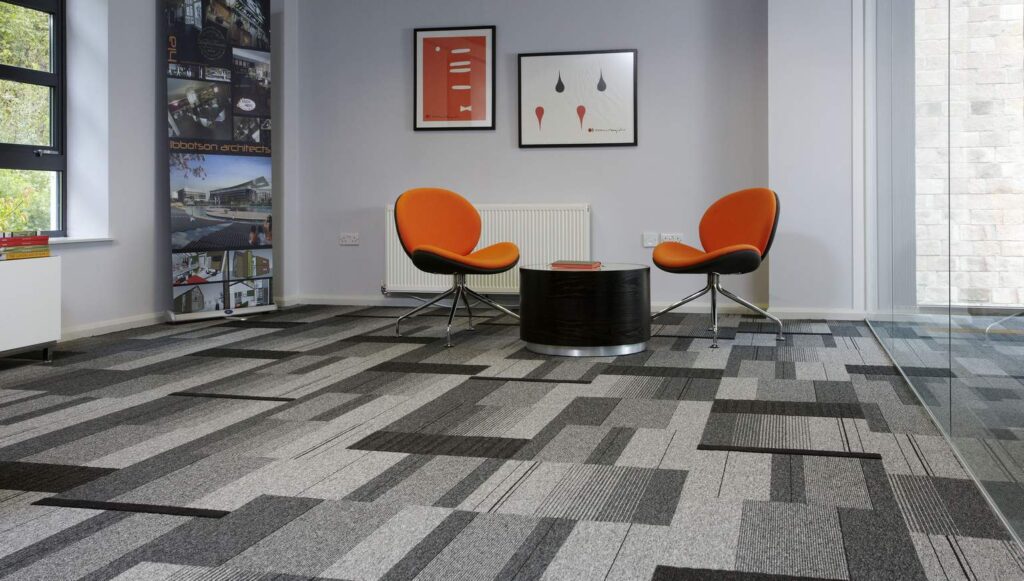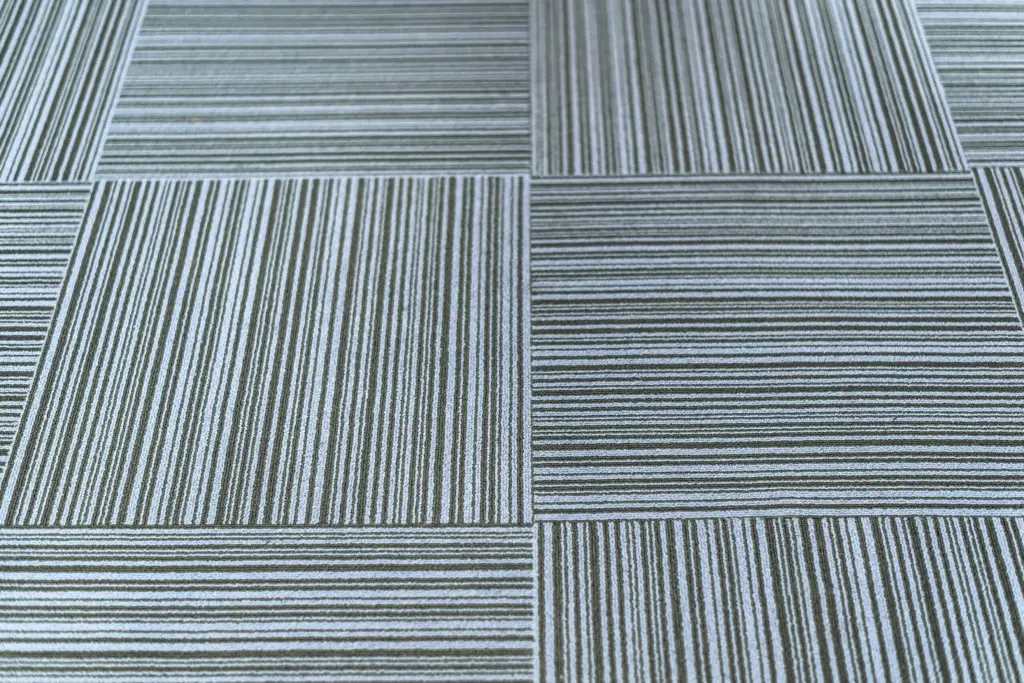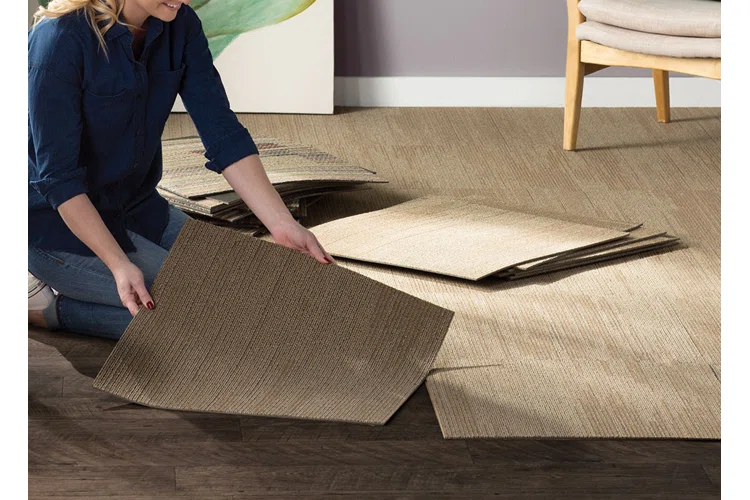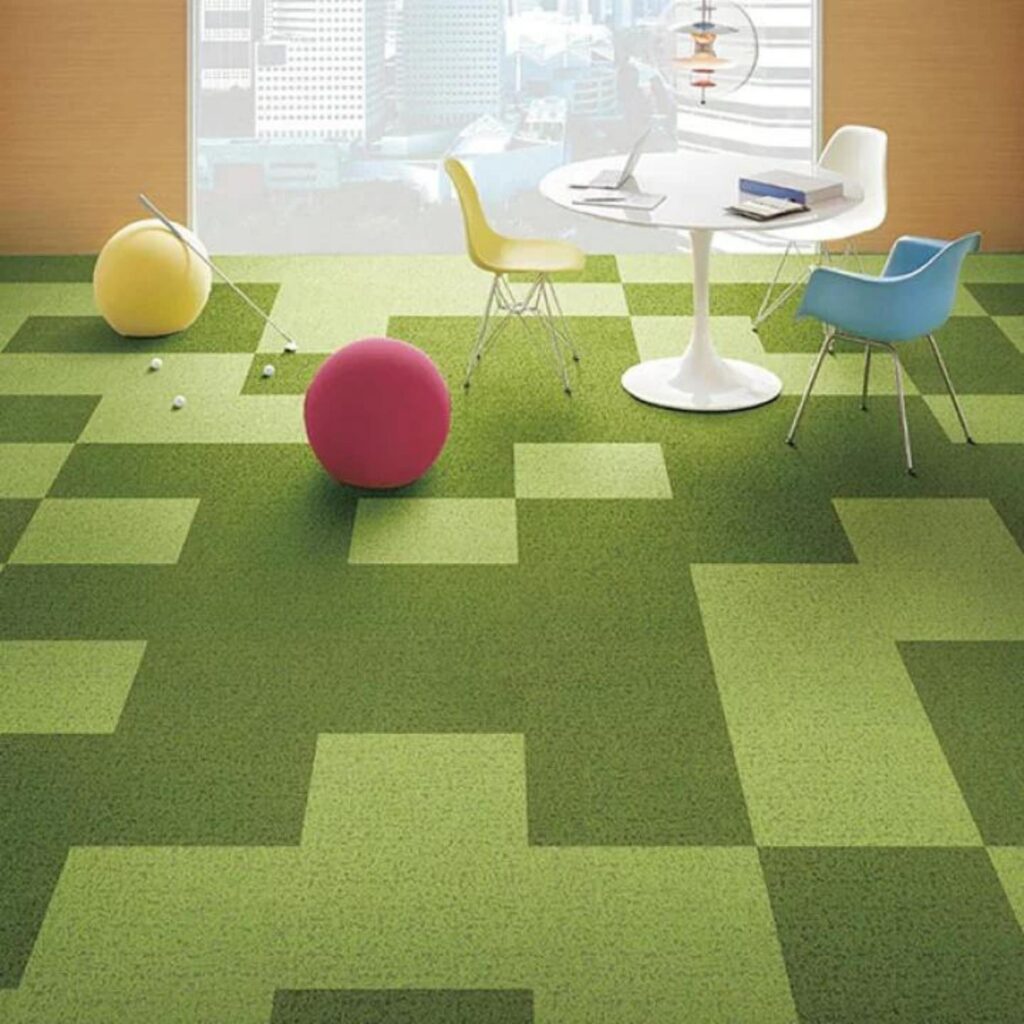The history and evolution of carpet tile can be traced back to the mid-20th century. While traditional carpets have been in use for centuries, carpet tiles emerged as a more practical and versatile flooring solution in response to the growing demand for modular and flexible design options.
Inception in the 1950s:
Carpet tiles were first introduced in the late 1950s by a Dutch company called Heuga, founded by Petrus Johannes van Heugten.
Van Heugten recognized that cutting carpet into smaller, manageable pieces could offer a more convenient and customizable flooring solution. He developed the first tiles using a needle punch production technique, which involved mechanically intertwining fibers to create a durable and compact material.
Adoption in commercial settings:
Initially, carpet tiles gained popularity in commercial spaces, such as offices and retail stores, due to their durability and ease of installation. Their modular nature allowed for quick and simple replacement of damaged or worn tiles, reducing maintenance costs and downtime.
Material advancements:
Over time, carpet tile manufacturing techniques evolved, and new materials were introduced. Nylon became a popular choice due to its durability, stain resistance, and colorfastness. Other materials, such as polyester and wool, also gained traction, providing consumers with a wider range of options to suit their specific needs and preferences.
Design innovations:
As the technology progressed, manufacturers began experimenting with different shapes, sizes, and patterns to offer even greater design flexibility. This led to the development of various tile shapes, including rectangles, hexagons, and irregular forms, which allowed for more intricate and unique patterns.
Growing residential market:
In the late 20th and early 21st centuries, carpet tiles began to find their way into residential settings, as homeowners recognized the benefits of their easy installation, maintenance, and design versatility. The residential market’s growth further spurred innovation in the industry, resulting in a wider range of textures, patterns, and colors to suit diverse home environments.
Eco-friendly developments:
As environmental concerns have become increasingly prominent, the carpet industry has embraced sustainability. Many manufacturers now offer eco-friendly tiles made from recycled materials, such as post-consumer plastic bottles and reclaimed carpet fibers. Additionally, some companies have implemented sustainable production processes to reduce their environmental impact.
Technological advancements:
The carpet tile industry continues to evolve, with technological advancements leading to improved backing materials, enhanced stain resistance, and added features like antimicrobial and antistatic properties. These innovations contribute to the overall performance, longevity, and appeal of carpet tiles in various settings.











